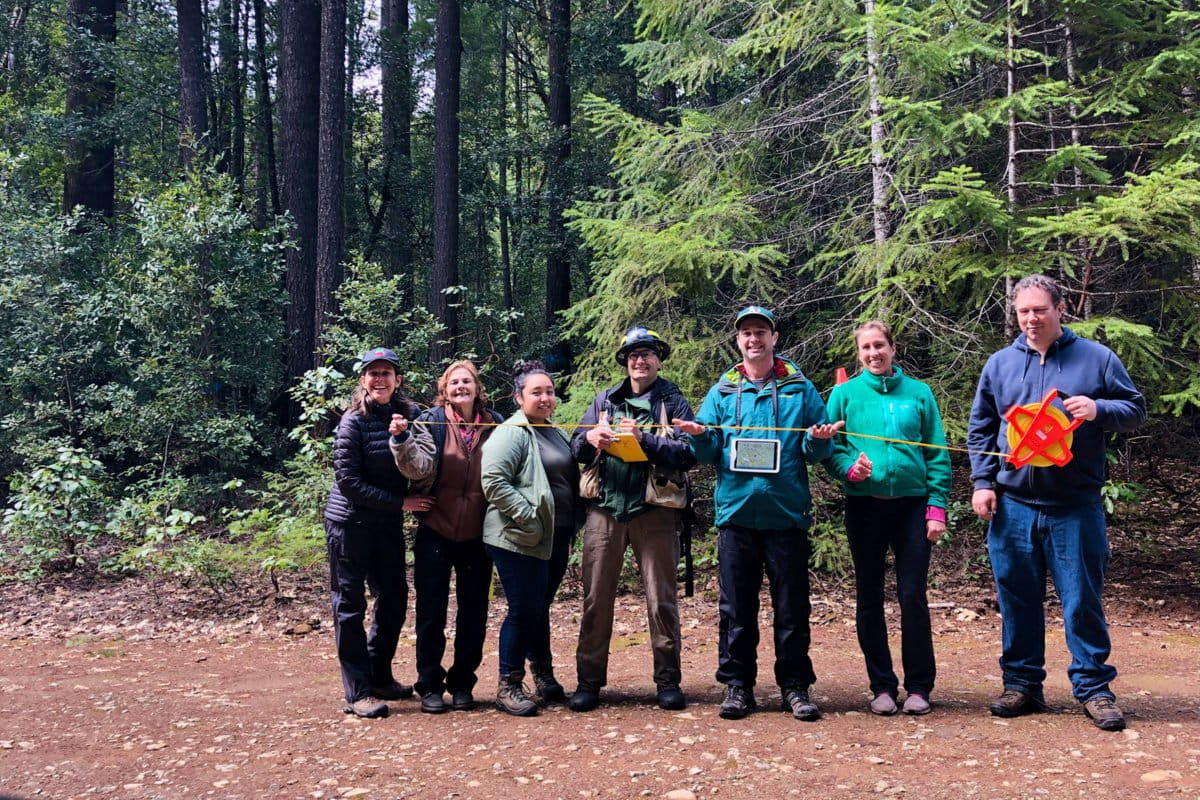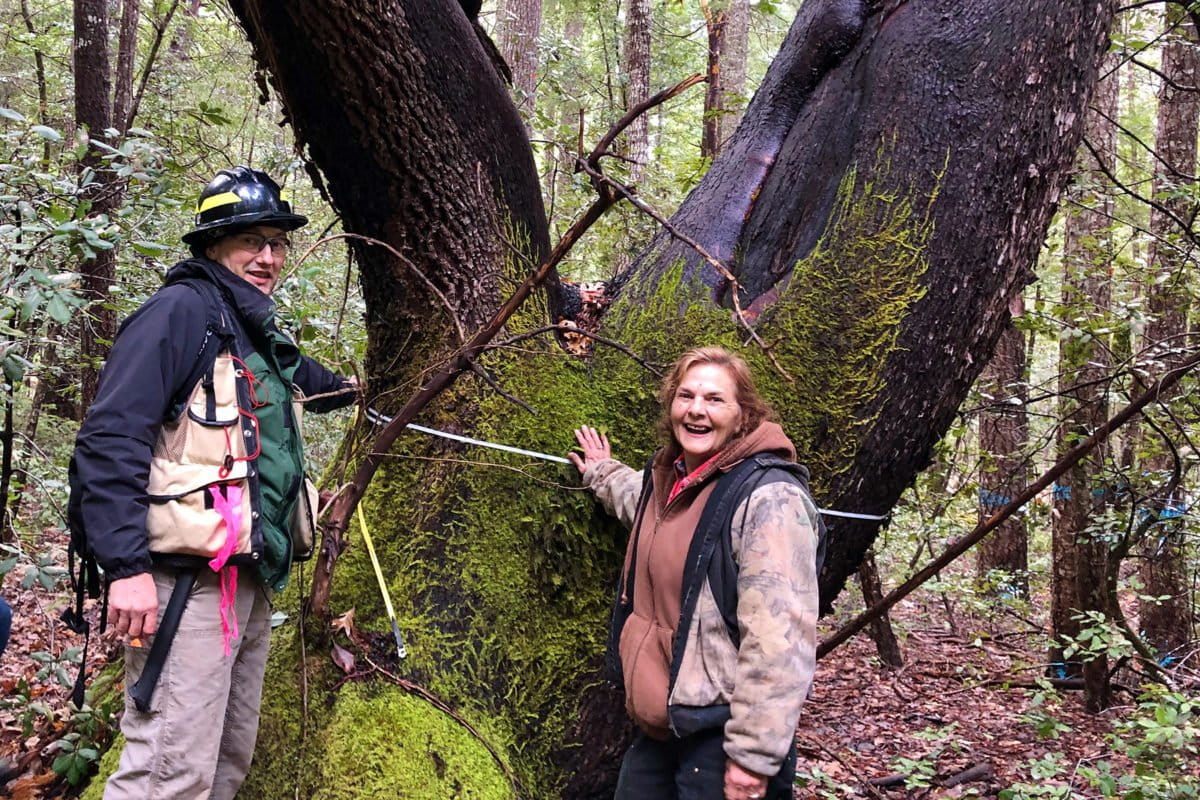- The Karuk Tribe in northern California has traditionally managed plants for food, fiber, and medicine, but decades of fire suppression and climate change are threatening culturally important species.
- Researchers partnered with Karuk Tribe land stewards to understand how fire suppression and drought have affected the quality of four plants central to their food security and culture.
- In this long-term collaborative study, Indigenous Knowledge expands on western science methods, assessing the ecological health of plants and their cultural usefulness.
Since time immemorial, the Karuk tribe of northern California have managed their ancestral lands, over 400,000 hectares of open oak woodlands, meadows, and forested mountains along the middle section of the Klamath River. They used low-level fires to maintain a healthy landscape for the plants central to their culture. But after settlers arrived in California, stole their land, and outlawed the controlled burns, the landscape changed.
“When [colonizers] first came here, they’re like, ‘It’s so beautiful. It’s like the Garden of Eden,’” said Lisa Morehead-Hillman, a Karuk Tribe cultural practitioner. “But that garden has been tended. When you take that human element out of there, then that garden is not anymore.”
Now, the costs of fire suppression and worsening climate change are clear: Wildfires and drought have damaged the landscape and plants used by the Karuk Tribe for food, fiber, and medicine. To chart a path toward restoring a healthier balance, Tribal members are working with academic researchers to inform western science with Indigenous Knowledge. Their recent work focuses on four plants central to Karuk culture and food systems, appearing in a recent issue of the Journal for Conservation Science.

Many Karuk Tribe members now live along the river on land purchased by the tribe. They see firsthand how big shifts in the forest have sent ripple effects through the plant populations they depend on. Dense stands of Douglas fir trees now dominate the landscape. And as the warming climate dries out the U.S. West, harvests have begun to suffer.
Several years ago, Tribal members designed a study with researchers at the University of California, Berkeley, and the U.S. Forest Service to monitor the current and future health of four plants at the core of Karuk culture. Their subjects are tanoak (Notholithocarpus densiflorus) and evergreen huckleberry (Vaccinium ovatum), which serve as staples in the Karuk peoples’ diet, and beargrass (Xerophyllum tenax) and iris (Iris spp.), which provide tough flexible blades for weaving baskets used in cooking and cultural traditions.
Researchers used distribution models – computer-generated maps based on environmental data – to examine how these plants have shifted in the landscape as land use practices and climate patterns changed. They drew from plant samples collected between 1860 and 2019.
“Species distribution models are becoming popular to guide conservation and management, but they’re also done at a fairly large scale,” said ethnobotanist Megan Mucioki of UC Berkeley, lead author of the paper. “They don’t pick up the nuances of microclimates, and quality of landscape and plants that are inherent to Indigenous Knowledge.” For instance, it’s not just about how much beargrass grows and where, but how good the harvest is for weaving.
Working with the Karuk Department of Natural Resources, the team observed plots of forest from 2018 through 2021 for this study. Researchers walked the woods with Tribal members and recorded their lived experiences and observations in 127 interviews and focus groups.
“I love wildflowers… They bloomed today,” said one interviewee. “Tomorrow, they’ll be fading and wilting and going away.”

All four plant species were stressed, the collaborators found. In some years, huckleberry and tanoak bore shriveled fruits or none at all. Beargrass and iris blades were often short, brittle, or infested with insects. Extreme drought, heat, and decades without low-intensity fires to manage the landscape were to blame, the team believes.
“This project shows that a lot of these spaces are not as healthy as they can be because there’s been that long-term fracture of stewardship,” said Mucioki.
The collaboration, which began in 2008, is “leading the way in a lot of the initiatives to inform western science with approaches from Indigenous Knowledge,” said Melinda Adams, an Apache cultural practitioner at the University of California, Davis, who was not involved with the study. “This innovative approach to fire and ecological research is something that academics and Indigenous community members can lean on.”

Karuk Tribal members are slowly regaining sovereignty over their right to manage the land. They now need the support and resources long allocated to academics and government agencies to restore cultural practices to the land, Morehead-Hillman said. While academic projects are often self-serving and exploit Tribal members and expertise, some research — when done right — can increase Tribal practitioners’ access to care for their own land, she noted.
“You can talk about traditional knowledge, day in and day out,” she said. “But traditional knowledge is only real if you do it.”
Citation:
Mucioki, M., Sowerwine, J.,Sarna-Wojcicki, D., McCovey, K., Bourque, S.D. (2022). Understanding the conservation challenges and needs of culturally significant plant species through Indigenous Knowledge and species distribution models. Journal for Nature Conservation, 70: 126285. https://doi.org/10.1016/j.jnc.2022.126285.
Roxanne Hoorn (@Eco_Writer_Roxy) is a graduate student in the Science Communication Program at the University of California, Santa Cruz. Other Mongabay stories produced by UCSC students can be found here.
Related listening from Mongabay’s podcast: How Indigenous knowledge guides marine conservation efforts: